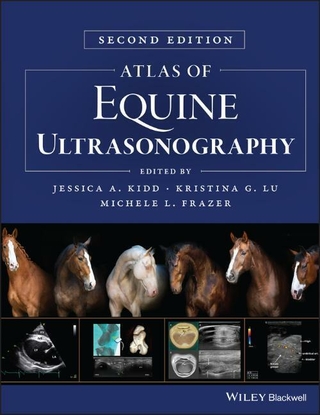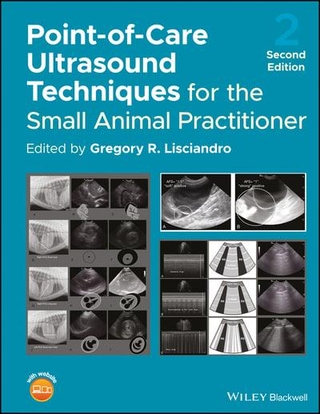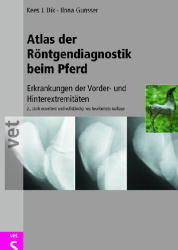
In-vivo Quantifikation der Gentamicinfreisetzung aus einer Implantatbeschichtung im Rattenmodell
Seiten
2020
|
1. Aufl.
Mensch & Buch (Verlag)
978-3-96729-045-5 (ISBN)
Mensch & Buch (Verlag)
978-3-96729-045-5 (ISBN)
- Keine Verlagsinformationen verfügbar
- Artikel merken
Die intramedulläre Osteosynthese der Tibia mit einem Marknagel ist eine häufig angewandte Methode zur Frakturstabilisierung bei unfallchirurgischen Operationen. Jedes Material, welches in den Körper implantiert wird, stellt jedoch ein erhöhtes Risiko für eine bakterielle Oberflächenbesiedlung dar (Gristina et al., 1988). Dies begünstigt die Entstehung von tiefen Wundinfektionen (Jansen & Peters, 1993). Implantatassoziierte Infektionen gehören noch immer zu den schwerwiegendsten Komplikationen bei der Frakturversorgung. Mithilfe einer biodegradierbaren Implantatbeschichtung lassen sich Wirkstoffe zur kontrollierten Freigabe in einen polymeren Trägerstoff einarbeiten (Lucke et al., 2003). Das Implantat kann dadurch als sogenanntes „Drug-Delivery-System“ fungieren (Fuchs et al., 2011). Mit Hilfe eines solchen Systems kann eine lokale antibiotische Wirkung im Frakturgebiet erzielt werden, wodurch das Risiko einer bakteriellen Kolonisation reduziert wird (Lucke et al., 2003). Darüber hinaus lassen sich mögliche unerwünschte Arzneimittelwirkungen einer systemischen antibiotischen Applikation durch eine lokale antibiotische Therapie einschränken.
Die vorliegende Arbeit umfasst eine detaillierte in-vitro und in-vivo Analyse der Wirkstofffreisetzung bzw. –anreicherung des in die Polymerbeschichtung Poly(D,L-Laktid) eines Titankirschnerdrahtes eingearbeiteten antibiotischen Wirkstoffs Gentamicin. Für die in-vivo Studie wurden gentamicinbeschichtete Titankirschnerdrähte in den Tibiamarkraum von Ratten implantiert und nach verschiedenen Zeitpunkten, über eine Dauer von 42 Tagen, entnommen. Zur Darstellung der in-vivo Freisetzungskinetik erfolgte eine Quantifizierung der Gentamicinkonzentration auf dem Implantat, im Knochen, im Endost, in der Niere sowie im Serum der Ratten. Weiterhin erfolgten röntgenologische, histologische und immunhistologische Analysen, die es ermöglichten Kenntnis über die Verteilung und Anreicherung von Gentamicin in den oben genannten Geweben zu erlangen.
Die Freisetzungskinetik des lokal verabreichten antibiotischen Wirkstoffs Gentamicin zeigte in-vitro und in-vivo einen ähnlichen Verlauf. Sowohl in-vitro als auch in-vivo erfolgte ein initialer Anstieg der Gentamicinfreisetzung. Zum Untersuchungszeitpunkt „eine Stunde“ nach Implantation der Titankirschnerdrähte konnten die höchsten Gentamicinkonzentrationen in allen analysierten Geweben und auf den Titankirschnerdrähten ermittelt werden. Über den gesamten Untersuchungszeitraum von einer Stunde bis 42 Tage konnte der Wirkstoff Gentamicin im Endost nachgewiesen werden, wobei bis zum Zeitpunkt „vier Stunden“ nach Implantation der Titankirschnerdrähte eine antimikrobiell wirksame Gentamicinkonzentration erreicht wurde. Die radiologische Untersuchung der Tibia zeigte keine Anzeichen einer destruktiven Veränderung des Knochens durch das Implantat und dessen Beschichtung. Dies weist auf eine gute Biointegrität von Implantat und Beschichtung hin. Die immunhistochemische Färbung mit der Avidin- Biotin- Complex- Methode zeigte eine Akkumulation des Gentamicins im Bereich der Nierenrinde, was vermutlich auf die renale Elimination des Wirkstoffes zurückzuführen ist. Das zum Ausschluss einer Toxizität des aus der Polymerbeschichtung freigesetzten Gentamicins histologisch untersuchte Nierengewebe, zeigte keine Anzeichen entzündlicher oder nekrotischer Prozesse. Da die renale Exkretionsrate im Rahmen der vorliegenden Arbeit nicht ermittelt wurde, erfolgte keine Berechnung der absoluten in-vivo freigesetzten Gentamicinkonzentration. Die Kombination der verschiedenen Methoden zur Quantifizierung und Darstellung von Gentamicin in den Geweben, wie sie in dieser Arbeit verwendet wurden, erlauben es, Informationen über die Akkumulation und die Aktivität des lokal freigesetzten Antibiotikums über den gesamten Untersuchungszeitraum zu sammeln. Aufgrund der beschriebenen Gefahr der Ausbildung einer bakteriellen Infektion infolge einer Tibiafraktur, als auch nach Frakturstabilisierung, ist eine schnellstmögliche lokale antibiotische Aktivität notwendig.
Die Untersuchungsergebnisse dieser Arbeit zeigen, dass durch den Einsatz von Poly(D,L- Laktid) beschichteten Titankirschnerdrähten, mit dem inkorporierten Wirkstoff Gentamicin, in den ersten vier Stunden postoperativ antimikrobiell wirksame Gentamicinkonzentrationen im Operationsgebiet erreicht werden können. Ferner wurden radiologisch sowie histologisch keine Anzeichen unerwünschter Arzneimittelwirkungen des Gentamicins in den untersuchten Geweben nachgewiesen. Mit Poly(D,L- Laktid) und Gentamicin beschichtete Osteosynthesematerialien scheinen somit für eine perioperative Antibiotikaprophylaxe, gegebenenfalls ergänzend zu einer systemischen Antibiotikatherapie, geeignet zu sein. "In-vivo quantification of gentamicin released from an implant coating"
The intramedullary osteosynthesis of the tibia with a mark nail is a frequently used method for the stabilization of fractures in accident surgery. However, any material implanted in the body presents an increased risk of bacterial surface colonization (Gristina et al., 1988). This promotes the development of deep wound infections (Jansen & Peters, 1993). Implantassociated infections are still one of the most serious complications in fracture care. Using a biodegradable implant coating, active substances can be incorporated into a polymer carrier material for controlled release (Wildemann et al., 2004). The implant can thus function as a so called "drug delivery system" (Fuchs et al., 2011). By means of these systems, a local antimicrobial effect in the fracture area can be achieved, thus reducing the risk of bacterial colonization (Lucke et al., 2003). In addition, adverse drug effects of a systemic drug administration can be limited by using a local antibiotic therapy.
The present work comprises detailed in-vitro and in-vivo analysis of the drug release and enrichment of the antibiotic agent gentamicin incorporated into the polymer coating poly(D, L- lactide). In the in-vivo study, gentamicin coated titanium wires were implanted in the tibiae of rats and removed at various time points for a period up to 42 days post implantation. For investigation of the in-vivo release kinetics, the gentamicin concentration was quantified on the explanted wires, in the bone, in the endosteum, in the kidney and in the serum of the rats. Furthermore, radiographic, histological and immunohistological analyses were performed, enabling to gain further information about the distribution and accumulation of gentamicin in the above mentioned tissues. The release kinetics of the locally administered antimicrobial agent gentamicin in the in-vitro and in-vivo studies were comparable. In-vitro as well as in-vivo, an initial increase in the release of gentamicin could be observed. The highest gentamicin concentrations could be measured at the time point "one hour" after implantation of the titanium wires in all analysed tissues and on the titanium wires. During the entire period from one hour to 42 days post implantation, the agent gentamicin could be detected in the endosteum. At the time point "four hours" after implantation of the titanium wires, an antimicrobial effective gentamicin concentration could be detected. No signs of destructive alterations in the bone tissue due to the implant or its coating could be observed by means of radiological investigation of the tibia, indicating a good bio-integrity of implant and polymer coating. Immunohistochemical staining using the avidin- biotin complex method revealed an accumulation of gentamicin in the area of the renal cortex, presumably due to the renal elimination of the drug. The histological investigation of the kidney tissue, performed to exclude a toxic effect of the released gentamicin, did not show any signs of inflammatory or necrotic processes. Since the renal excretion rate has not been determined in the present work, the absolute amount of the invivo released gentamicin could not be calculated.
The combination of the different methods for the quantification and visualization of gentamicin in the tissues used in this work, allows to gain information about the accumulation and the activity of the locally released antimicrobial agent during the entire study period. Due to the risk of bacterial infection in open tibia fractures and following fracture stabilization, a local antibiotic activity as soon as possible is necessary. The results of this study show that the use of poly(D, L-lactide) coated titanium wires with the incorporated agent gentamicin enables the establishment of antimicrobial effective gentamicin concentrations at the operation site within the first four hours after implantation. Furthermore, no signs of adverse effects of the gentamicin in the examined tissues could be observed by means of the applied radiological and histological methods. Poly (D,L- actide) and gentamicin coated osteosynthesis materials may thus be suitable for perioperative antibiotic prophylaxis, if necessary in addition to a systemic antibiotic therapy.
Die vorliegende Arbeit umfasst eine detaillierte in-vitro und in-vivo Analyse der Wirkstofffreisetzung bzw. –anreicherung des in die Polymerbeschichtung Poly(D,L-Laktid) eines Titankirschnerdrahtes eingearbeiteten antibiotischen Wirkstoffs Gentamicin. Für die in-vivo Studie wurden gentamicinbeschichtete Titankirschnerdrähte in den Tibiamarkraum von Ratten implantiert und nach verschiedenen Zeitpunkten, über eine Dauer von 42 Tagen, entnommen. Zur Darstellung der in-vivo Freisetzungskinetik erfolgte eine Quantifizierung der Gentamicinkonzentration auf dem Implantat, im Knochen, im Endost, in der Niere sowie im Serum der Ratten. Weiterhin erfolgten röntgenologische, histologische und immunhistologische Analysen, die es ermöglichten Kenntnis über die Verteilung und Anreicherung von Gentamicin in den oben genannten Geweben zu erlangen.
Die Freisetzungskinetik des lokal verabreichten antibiotischen Wirkstoffs Gentamicin zeigte in-vitro und in-vivo einen ähnlichen Verlauf. Sowohl in-vitro als auch in-vivo erfolgte ein initialer Anstieg der Gentamicinfreisetzung. Zum Untersuchungszeitpunkt „eine Stunde“ nach Implantation der Titankirschnerdrähte konnten die höchsten Gentamicinkonzentrationen in allen analysierten Geweben und auf den Titankirschnerdrähten ermittelt werden. Über den gesamten Untersuchungszeitraum von einer Stunde bis 42 Tage konnte der Wirkstoff Gentamicin im Endost nachgewiesen werden, wobei bis zum Zeitpunkt „vier Stunden“ nach Implantation der Titankirschnerdrähte eine antimikrobiell wirksame Gentamicinkonzentration erreicht wurde. Die radiologische Untersuchung der Tibia zeigte keine Anzeichen einer destruktiven Veränderung des Knochens durch das Implantat und dessen Beschichtung. Dies weist auf eine gute Biointegrität von Implantat und Beschichtung hin. Die immunhistochemische Färbung mit der Avidin- Biotin- Complex- Methode zeigte eine Akkumulation des Gentamicins im Bereich der Nierenrinde, was vermutlich auf die renale Elimination des Wirkstoffes zurückzuführen ist. Das zum Ausschluss einer Toxizität des aus der Polymerbeschichtung freigesetzten Gentamicins histologisch untersuchte Nierengewebe, zeigte keine Anzeichen entzündlicher oder nekrotischer Prozesse. Da die renale Exkretionsrate im Rahmen der vorliegenden Arbeit nicht ermittelt wurde, erfolgte keine Berechnung der absoluten in-vivo freigesetzten Gentamicinkonzentration. Die Kombination der verschiedenen Methoden zur Quantifizierung und Darstellung von Gentamicin in den Geweben, wie sie in dieser Arbeit verwendet wurden, erlauben es, Informationen über die Akkumulation und die Aktivität des lokal freigesetzten Antibiotikums über den gesamten Untersuchungszeitraum zu sammeln. Aufgrund der beschriebenen Gefahr der Ausbildung einer bakteriellen Infektion infolge einer Tibiafraktur, als auch nach Frakturstabilisierung, ist eine schnellstmögliche lokale antibiotische Aktivität notwendig.
Die Untersuchungsergebnisse dieser Arbeit zeigen, dass durch den Einsatz von Poly(D,L- Laktid) beschichteten Titankirschnerdrähten, mit dem inkorporierten Wirkstoff Gentamicin, in den ersten vier Stunden postoperativ antimikrobiell wirksame Gentamicinkonzentrationen im Operationsgebiet erreicht werden können. Ferner wurden radiologisch sowie histologisch keine Anzeichen unerwünschter Arzneimittelwirkungen des Gentamicins in den untersuchten Geweben nachgewiesen. Mit Poly(D,L- Laktid) und Gentamicin beschichtete Osteosynthesematerialien scheinen somit für eine perioperative Antibiotikaprophylaxe, gegebenenfalls ergänzend zu einer systemischen Antibiotikatherapie, geeignet zu sein. "In-vivo quantification of gentamicin released from an implant coating"
The intramedullary osteosynthesis of the tibia with a mark nail is a frequently used method for the stabilization of fractures in accident surgery. However, any material implanted in the body presents an increased risk of bacterial surface colonization (Gristina et al., 1988). This promotes the development of deep wound infections (Jansen & Peters, 1993). Implantassociated infections are still one of the most serious complications in fracture care. Using a biodegradable implant coating, active substances can be incorporated into a polymer carrier material for controlled release (Wildemann et al., 2004). The implant can thus function as a so called "drug delivery system" (Fuchs et al., 2011). By means of these systems, a local antimicrobial effect in the fracture area can be achieved, thus reducing the risk of bacterial colonization (Lucke et al., 2003). In addition, adverse drug effects of a systemic drug administration can be limited by using a local antibiotic therapy.
The present work comprises detailed in-vitro and in-vivo analysis of the drug release and enrichment of the antibiotic agent gentamicin incorporated into the polymer coating poly(D, L- lactide). In the in-vivo study, gentamicin coated titanium wires were implanted in the tibiae of rats and removed at various time points for a period up to 42 days post implantation. For investigation of the in-vivo release kinetics, the gentamicin concentration was quantified on the explanted wires, in the bone, in the endosteum, in the kidney and in the serum of the rats. Furthermore, radiographic, histological and immunohistological analyses were performed, enabling to gain further information about the distribution and accumulation of gentamicin in the above mentioned tissues. The release kinetics of the locally administered antimicrobial agent gentamicin in the in-vitro and in-vivo studies were comparable. In-vitro as well as in-vivo, an initial increase in the release of gentamicin could be observed. The highest gentamicin concentrations could be measured at the time point "one hour" after implantation of the titanium wires in all analysed tissues and on the titanium wires. During the entire period from one hour to 42 days post implantation, the agent gentamicin could be detected in the endosteum. At the time point "four hours" after implantation of the titanium wires, an antimicrobial effective gentamicin concentration could be detected. No signs of destructive alterations in the bone tissue due to the implant or its coating could be observed by means of radiological investigation of the tibia, indicating a good bio-integrity of implant and polymer coating. Immunohistochemical staining using the avidin- biotin complex method revealed an accumulation of gentamicin in the area of the renal cortex, presumably due to the renal elimination of the drug. The histological investigation of the kidney tissue, performed to exclude a toxic effect of the released gentamicin, did not show any signs of inflammatory or necrotic processes. Since the renal excretion rate has not been determined in the present work, the absolute amount of the invivo released gentamicin could not be calculated.
The combination of the different methods for the quantification and visualization of gentamicin in the tissues used in this work, allows to gain information about the accumulation and the activity of the locally released antimicrobial agent during the entire study period. Due to the risk of bacterial infection in open tibia fractures and following fracture stabilization, a local antibiotic activity as soon as possible is necessary. The results of this study show that the use of poly(D, L-lactide) coated titanium wires with the incorporated agent gentamicin enables the establishment of antimicrobial effective gentamicin concentrations at the operation site within the first four hours after implantation. Furthermore, no signs of adverse effects of the gentamicin in the examined tissues could be observed by means of the applied radiological and histological methods. Poly (D,L- actide) and gentamicin coated osteosynthesis materials may thus be suitable for perioperative antibiotic prophylaxis, if necessary in addition to a systemic antibiotic therapy.
| Erscheinungsdatum | 29.06.2020 |
|---|---|
| Verlagsort | Berlin |
| Sprache | deutsch |
| Maße | 148 x 210 mm |
| Themenwelt | Veterinärmedizin ► Allgemein |
| Veterinärmedizin ► Klinische Fächer ► Bildgebende Verfahren | |
| Veterinärmedizin ► Klinische Fächer ► Chirurgie | |
| Schlagworte | Animal Models • Fracture Fixation • Fractures • Gentamicin • Gentamycin • Immunhistochemie • immunohistochemistry • Implantation • Infections • Infektionen • international (MeSH) • Knochenbrüche • poly (lactide) (MeSH) • protective coatings • rats • Tibia • Tiermodelle |
| ISBN-10 | 3-96729-045-X / 396729045X |
| ISBN-13 | 978-3-96729-045-5 / 9783967290455 |
| Zustand | Neuware |
| Haben Sie eine Frage zum Produkt? |
Mehr entdecken
aus dem Bereich
aus dem Bereich
Buch | Hardcover (2021)
Wiley-Blackwell (Verlag)
CHF 219,80
Erkrankungen der Vorder- und Hinterextremitäten
Buch | Hardcover (2002)
Schlütersche (Verlag)
CHF 97,90


